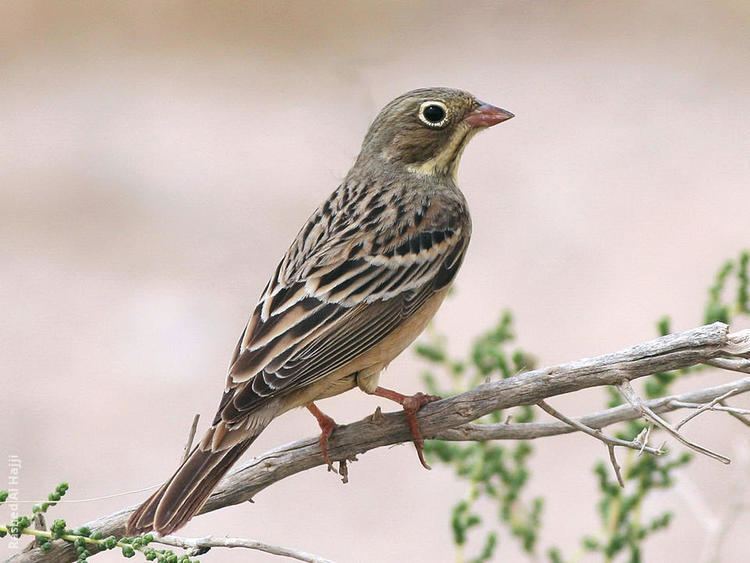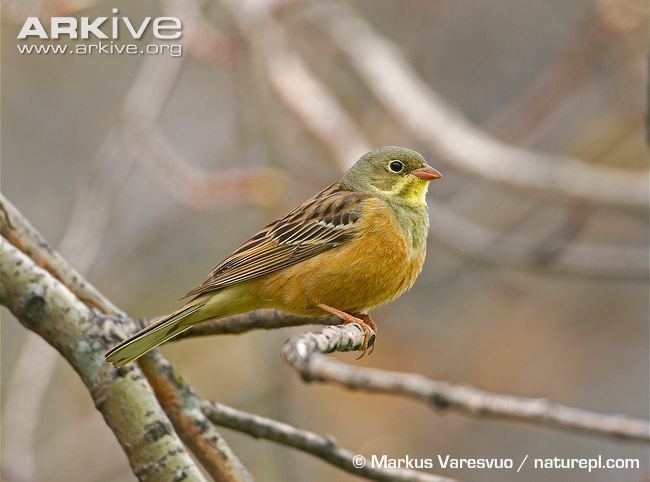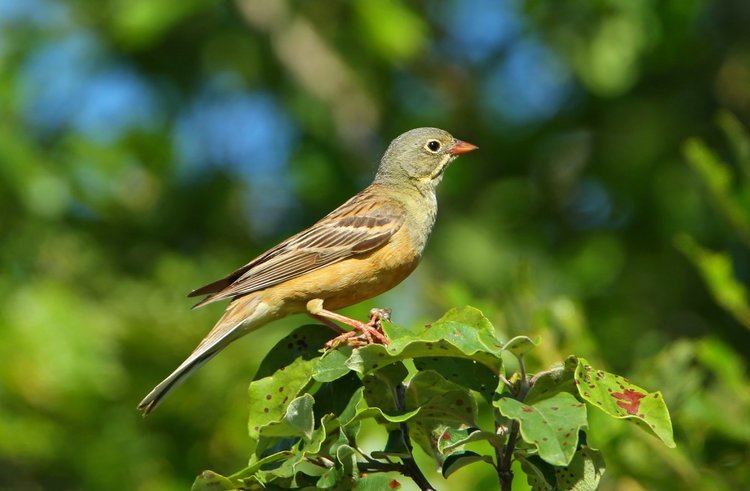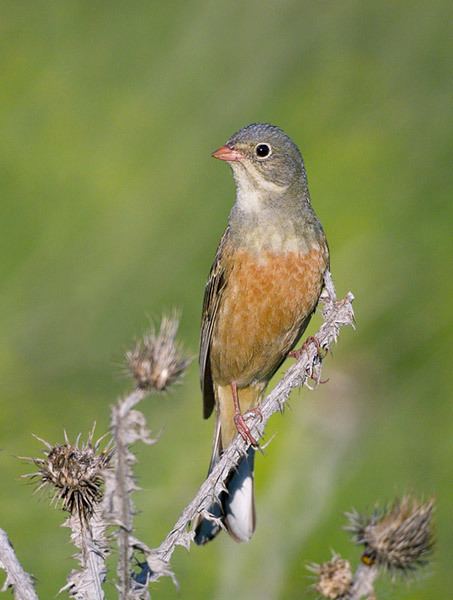Order Passeriformes Genus Emberiza Higher classification Emberiza | Phylum Chordata Family Emberizidae Scientific name Emberiza hortulana Rank Species | |
 | ||
Similar Stock dove, Eurasian tree sparrow, Armagnac, Ikizukuri, Casu marzu | ||
The ortolan, or ortolan bunting (Emberiza hortulana) is a bird in the bunting family Emberizidae, a passerine family now separated by most modern scholars from the finches, Fringillidae. The genus name Emberiza is from Old German Embritz, a bunting. The specific hortulana is from the Italian name, hortulane, for this bird. The English Ortolan is derived from Middle French hortolan, "gardener".
Contents
- Physical characteristics
- Behaviour
- Distribution and habitat
- Gastronomy
- Noted meals
- Legal status
- References

In September 2007, the French government announced its intent to enforce long ignored laws protecting the bird.
Physical characteristics

The ortolan is 16 cm in length and weighs 20–25 grams (0.71–0.88 oz). In appearance and habits it much resembles its relative the yellowhammer, but lacks the bright colouring of that species; the ortolan's head, for instance, is greenish-grey, instead of a bright yellow. The song of the male ortolan resembles that of the yellowhammer.
Behaviour
Ortolan nests are placed on or near the ground.
Seeds are the natural diet, but beetles and other insects are taken when feeding their young.
Distribution and habitat

A native of most European countries and western Asia, its distribution throughout its breeding range seems to be very local, and for this no obvious reason can be assigned. It reaches as far north as Scandinavia and beyond the Arctic Circle, frequenting cornfields and their neighbourhoods. It is an uncommon vagrant in spring, and particularly autumn, to the British Isles.
Gastronomy

The birds are caught with nets set during their autumn migratory flight to Africa. They are then kept in covered cages or boxes. This "artificial night" causes the birds to gorge themselves on grain (usually millet seed) until they double their bulk. "Roman Emperors stabbed out ortolans’ eyes in order to make the birds think it was night, making them eat even more". The birds are then thrown into a container of Armagnac which both drowns and marinates the birds.

The bird is roasted for eight minutes and then plucked. The consumer then places the bird feet first into their mouth while holding onto the bird's head. The ortolan is then eaten whole, or without the head and the consumer spits out the larger bones. The traditional way French gourmands eat ortolans is to cover their heads and face with a large napkin or towel while consuming the bird. The purpose of the towel is debated. Some claim it is to retain the maximum aroma with the flavour as they consume the entire bird at once, others have stated "Tradition dictates that this is to shield – from God’s eyes – the shame of such a decadent and disgraceful act", and others have suggested the towel hides the consumers spitting out bones. This use of the towel was begun by a priest, a friend of Jean Anthelme Brillat-Savarin.

At one time, the island of Cyprus formed a chief depot for the exportation of ortolans, which were pickled in spices and vinegar and packed in casks containing from 300 to 400 each. In the early 20th century, between 400 and 500 casks were annually exported from Cyprus.
Noted meals
Legal status
Ortolan hunting was banned in France in 1999, but the law was poorly enforced and it is thought that up to 50,000 ortolans were killed each year. According to France’s League for the Protection of Birds, France's ortolan population fell 30 per cent between 1997 and 2007. In 2007, the French government vowed to strictly enforce some existing rules about banning the practice, with the maximum fine set at €6,000 (£4,800). Killing and cooking ortolans is banned across the EU. In 2007, the pressure from France's League for Protection of Birds and from the European Union resulted in the French government promising to enforce the EU directive protecting the ortolan.
European Union member states prohibit:
